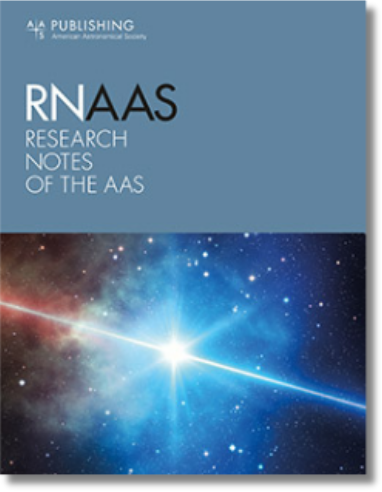An astronomical society journal has issued its first retraction in its 10-year history — for work done by a NASA researcher and a high school student. The duo set out to confirm an astrophysics law using calculations that assumed the law was true.
The journal, Research Notes of the AAS, is published by the American Astronomical Society. It is not peer-reviewed, nor is it indexed in Clarivate’s Web of Science. The retraction has prompted the journal to revise its policies on reviewing work before publication.
One of the two authors on the retracted 2024 article is Jadon Lam, who at the time was a student at Pleasant Grove High School in Elk Grove, California. Lam is now at the California Institute of Technology in Pasadena studying astrophysics, according to his LinkedIn profile.
This isn’t the first time we’ve come across a young researcher who lost a paper. In 2012, we covered a case of a high school student who initiated the retraction of his own work after realizing he made a mistake, a move that didn’t end up hurting his future career in science.
According to the Caltech admissions website, research papers are considered supplementary but can be included in applications.
Corresponding author Jonathan Jiang, a researcher at the Jet Propulsion Laboratory, a NASA-sponsored lab at Caltech where the collaboration took place, confirmed Lam is currently enrolled at Caltech but told Retraction Watch Lam’s admission to the university “was based solely on his academic record and overall merits.”
Jiang told us Lam was a “volunteer researcher driven by his curiosity in physics and astronomy” and called the article a “school project.” Lam did not respond to our request for comment.
According to the October retraction notice, “the values used for the semimajor axis had, in fact, been calculated rather than being independently measured, implicitly assuming Kepler’s third law,” according to the notice. Kepler’s Third Law describes planetary orbit patterns around the sun, and in this case was applied to planets orbiting other stars.
Chris Lintott, the editor of RNAAS and astrophysicist at the University of Oxford in England, told us the journal was alerted to issues with the project after it went online, when readers started raising concerns on social media.
Peter Plavchan, associate professor of physics and astronomy at George Mason University in Fairfax, Virginia, posted on X in September. When we asked Lintott if this was the thread which alerted the journal, he told us he was “pretty sure” he encountered the critiques on Bluesky.
“The Note compares two properties of planets — the semi-major axis and period — for a sample drawn from NASA’s Exoplanet Archive, which is a repository of data from many disparate sources,” Lintott told us. “Rather than including independent observations, the Exoplanet Archive calculates the semi-major axis for many planets from the observed period, and so what the authors had assumed was data were actually these calculated values.”
Lintott clarified the journal publishes “works-in-progress, negative results, short observing reports or communications which may not make a full paper, and for student projects.” He said he moderates the contributions, “assisted where necessary by the rest of the AAS Journals editorial board,” and the journal has “no filter for how notable or otherwise a result is.” The retraction was the first for the journal, which has published over 2,000 “notes,” Lintott said.
He also told us the journal “altered our procedure for checking archival data sources” after the retraction.
Like Retraction Watch? You can make a tax-deductible contribution to support our work, follow us on X or Bluesky, like us on Facebook, follow us on LinkedIn, add us to your RSS reader, or subscribe to our daily digest. If you find a retraction that’s not in our database, you can let us know here. For comments or feedback, email us at [email protected].
Processing…
Success! You’re on the list.
Whoops! There was an error and we couldn’t process your subscription. Please reload the page and try again.



